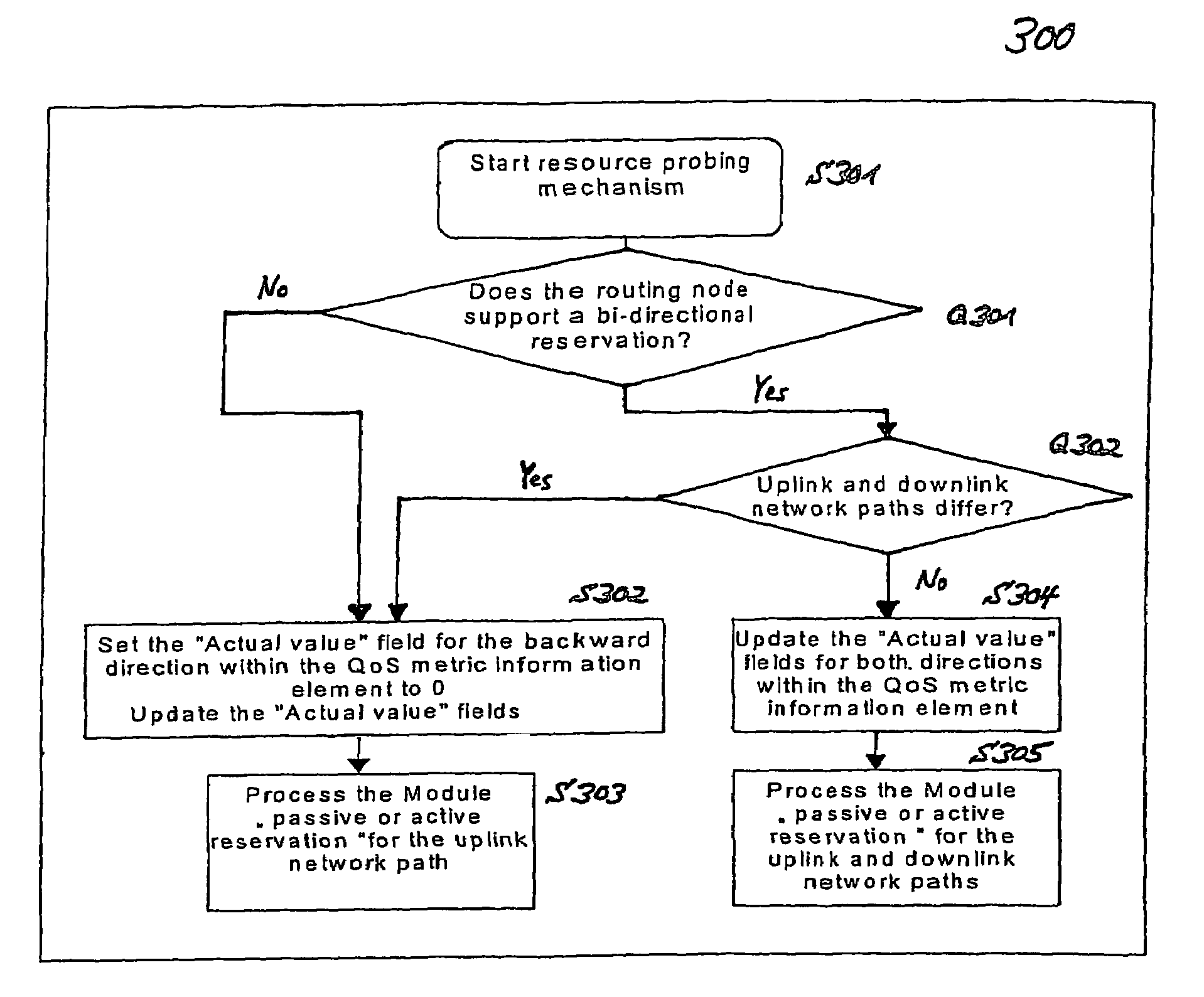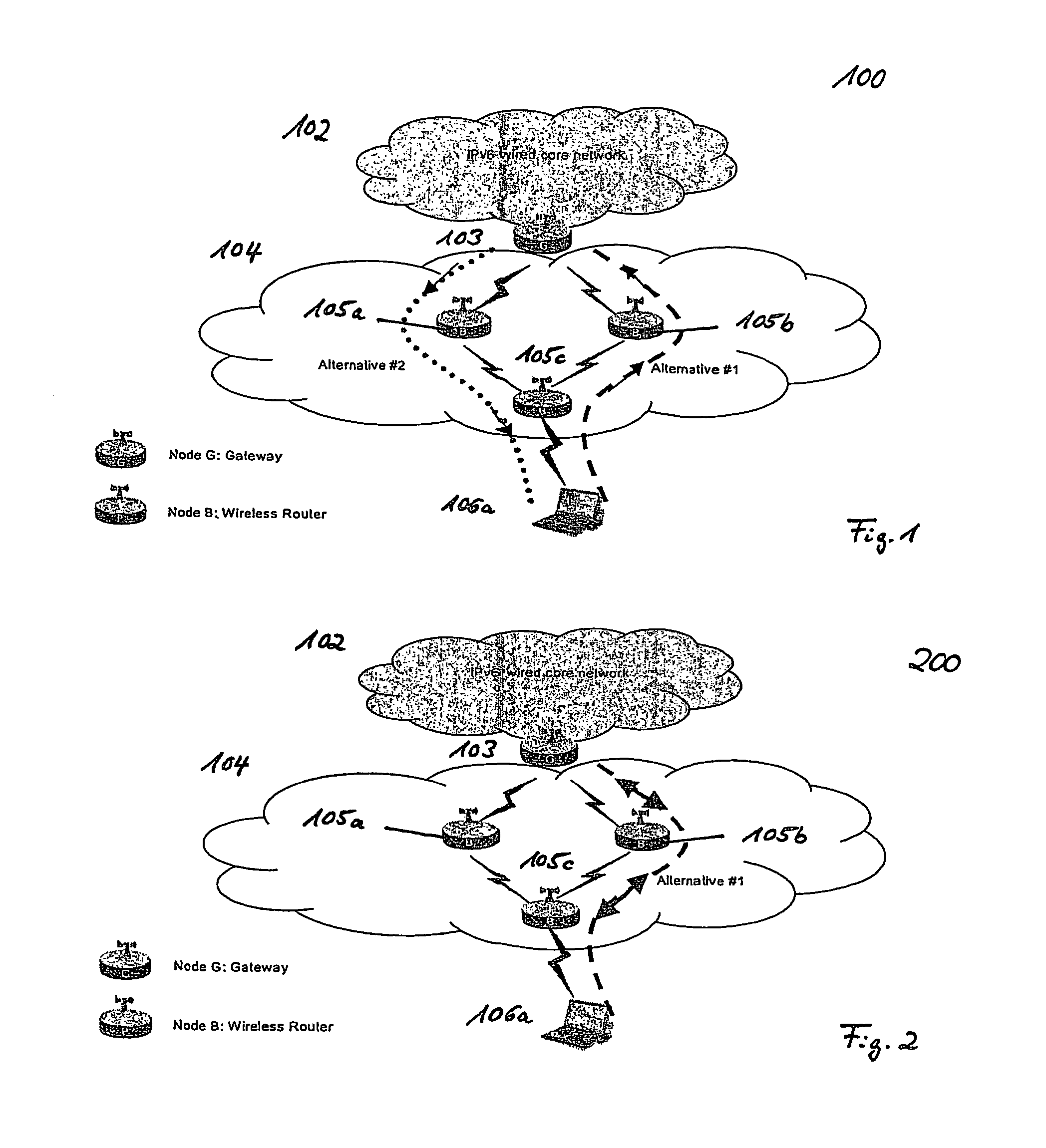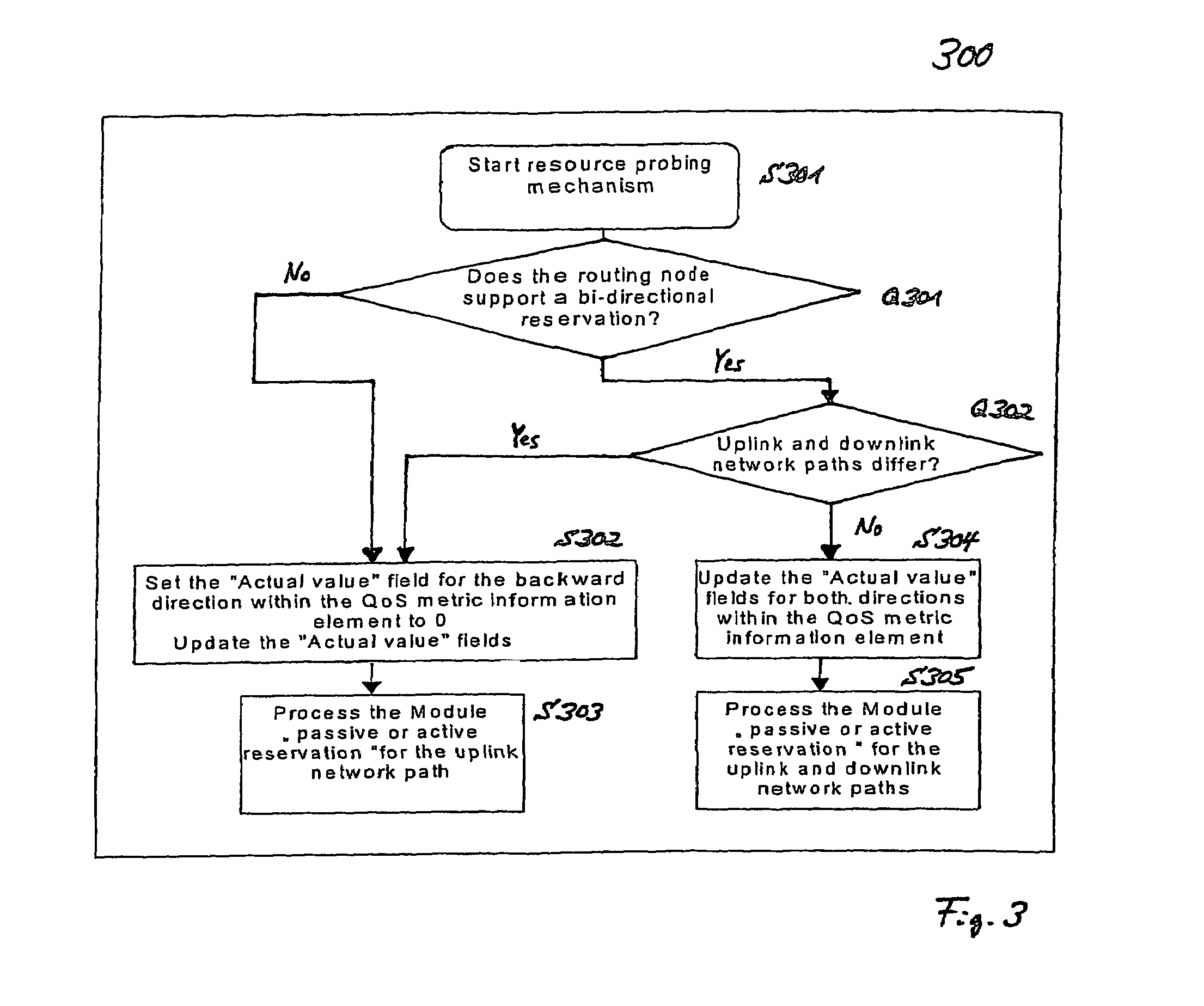Bidirectional QoS reservation within an in-band signaling mechanism
a signaling mechanism and bidirectional technology, applied in the field of qualityofservice (qos) support for applications, can solve the problems of not being able to meet the overall qos needs of a conversational connection, the prevailing qos protocol according to the state of the art is not well suited to such a dynamic mobile wireless environment, and the routing path of a data flow might change over time quite frequently and significantly
- Summary
- Abstract
- Description
- Claims
- Application Information
AI Technical Summary
Benefits of technology
Problems solved by technology
Method used
Image
Examples
Embodiment Construction
[0074]In the following, embodiments of the present invention as depicted in FIGS. 1 to 9 shall be explained in detail. Furthermore, a brief survey of an exemplary message syntax for an in-band signaling protocol for bidirectional signaling according to the present invention shall be given. The meaning of the symbols, which are designated with reference numerals and signs in these figures can be taken from Table 2.
[0075]In IPv6, optional Internet-layer information is encoded in separate headers, which may be placed between the IPv6 header and the upper-layer header in a packet. Signaling information is carried in the hop-by-hop options header if it has to be interpreted by all routing nodes along a routing path. For information, which just has to be transferred between peer nodes, the destination option header is used.
[0076]According to an example of the present invention, the IPv6 hop-by-hop extension header, which is defined in the article “Internet Protocol, Version 6 (IPv6) Speci...
PUM
 Login to View More
Login to View More Abstract
Description
Claims
Application Information
 Login to View More
Login to View More - R&D
- Intellectual Property
- Life Sciences
- Materials
- Tech Scout
- Unparalleled Data Quality
- Higher Quality Content
- 60% Fewer Hallucinations
Browse by: Latest US Patents, China's latest patents, Technical Efficacy Thesaurus, Application Domain, Technology Topic, Popular Technical Reports.
© 2025 PatSnap. All rights reserved.Legal|Privacy policy|Modern Slavery Act Transparency Statement|Sitemap|About US| Contact US: help@patsnap.com



